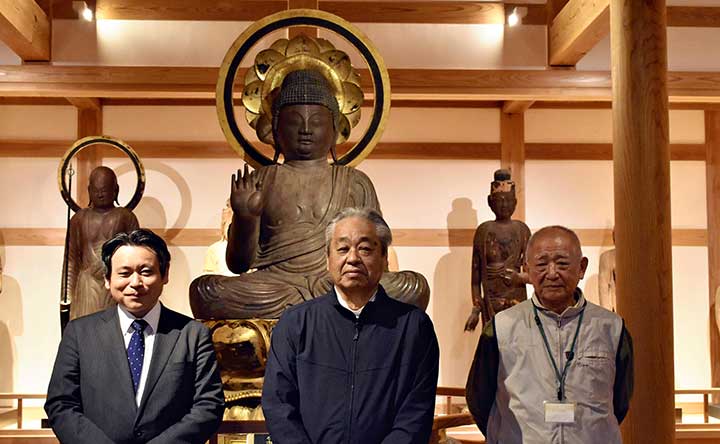Tue, Mar 18, 2025

In some areas of Japan, local residents take it into their own hands to protect the artistically and historically valuable Buddhist sculptures, craft and other cultural properties of their region. The Kannon-no-sato (Kannon village) in the Takatsuki district of Nagahama, Shiga Pref., so-called because not a small number of Kannon statues there are preserved by the local residents, is a case in point. However, the decreasing and aging of the population in these areas may make it difficult for the locals to continue their efforts in the future.
Kawazu Heian Buddha Statue Pavilion
(Shizuoka Prefecture)
The Kawazu Heian Buddha Statue Pavilion is in Kawazu, Shizuoka Pref., which is home to the early blooming Kawazu-zakura cherry blossoms. Opened in 2013 by local residents with prefectural subsidy, the pavilion houses and displays the seated Yakushi Nyorai (9th century; about 115 centimeters in height) and 25 other Heian-period statues that have been passed down in the area. Some of the statues were already designated as important cultural properties of Shizuoka when they were all collectively designated as an important cultural property of Japan in 2024.
The statues belonged to an unoccupied temple called Nanzen-ji in the Yatsu district of Kawazu. They were buried underground in a landslide during the 15th century, and although they were dug up carefully much later, some of them had lost their arms and are damaged on the surface.

According to Sei Tajima, 55, a curator at the Uehara Museum of Art in Shimoda, Shizuoka Pref., which is not far from Kawazu, the statues were taken care of by a single person who came to him for some advice in 2008. This was what led to the founding of the pavilion. The person had concerns about having had to take care of the statues all by himself and sought local help.

The curator played a role in bringing local help by explaining to the residents that the statues from the millennium past were indeed precious. The residents were impressed by what they heard and started to study how they could establish an exhibition facility for the statues. Eventually, a pavilion with an exterior of a modern facility but an interior of a wooden temple was completed. The statues are put on display without glass casings, allowing visitors to view them up close.
Visitors to the pavilion will be guided by local residents.
(From The Yomiuri Shimbun and other sources)
0%